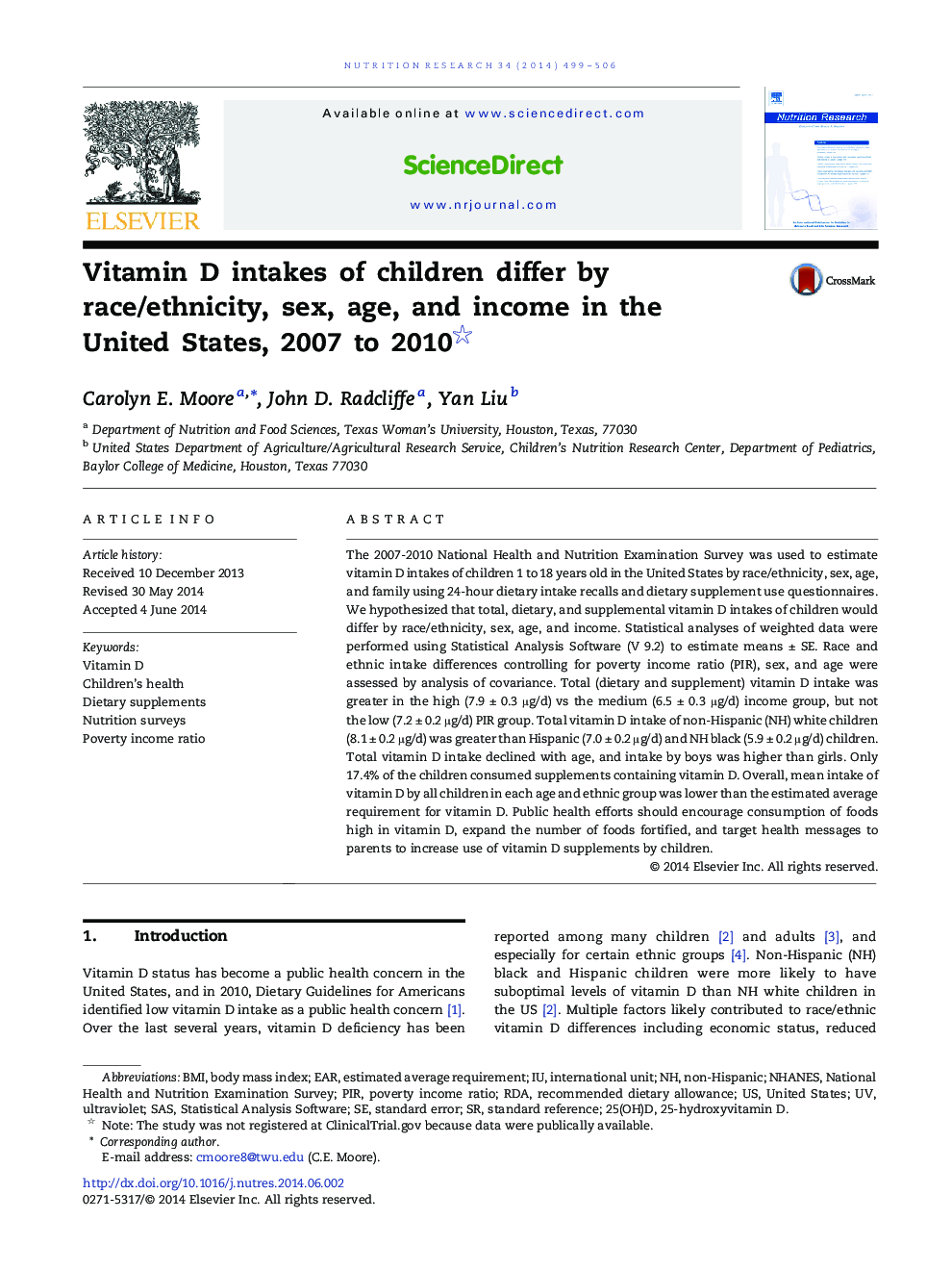| Article ID | Journal | Published Year | Pages | File Type |
|---|---|---|---|---|
| 5904435 | Nutrition Research | 2014 | 8 Pages |
The 2007-2010 National Health and Nutrition Examination Survey was used to estimate vitamin D intakes of children 1 to 18 years old in the United States by race/ethnicity, sex, age, and family using 24-hour dietary intake recalls and dietary supplement use questionnaires. We hypothesized that total, dietary, and supplemental vitamin D intakes of children would differ by race/ethnicity, sex, age, and income. Statistical analyses of weighted data were performed using Statistical Analysis Software (V 9.2) to estimate means ± SE. Race and ethnic intake differences controlling for poverty income ratio (PIR), sex, and age were assessed by analysis of covariance. Total (dietary and supplement) vitamin D intake was greater in the high (7.9 ± 0.3 μg/d) vs the medium (6.5 ± 0.3 μg/d) income group, but not the low (7.2 ± 0.2 μg/d) PIR group. Total vitamin D intake of non-Hispanic (NH) white children (8.1 ± 0.2 μg/d) was greater than Hispanic (7.0 ± 0.2 μg/d) and NH black (5.9 ± 0.2 μg/d) children. Total vitamin D intake declined with age, and intake by boys was higher than girls. Only 17.4% of the children consumed supplements containing vitamin D. Overall, mean intake of vitamin D by all children in each age and ethnic group was lower than the estimated average requirement for vitamin D. Public health efforts should encourage consumption of foods high in vitamin D, expand the number of foods fortified, and target health messages to parents to increase use of vitamin D supplements by children.
